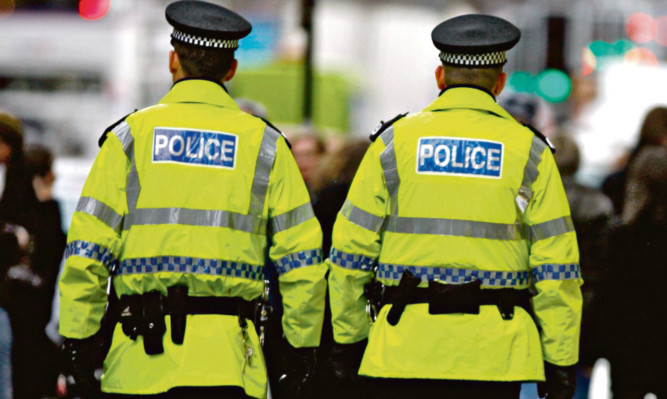
A £19m bill as force defends its policy of rehiring staff who have vital skills.
Police are spending £20,000 a day on a retired army of officers who have re-joined the force after cashing in their pensions.
Across Scotland, nearly £19m has been forked out since 2012 bringing back former constables, civilian staff and inspectors.
They have been re-employed to do a variety of jobs from supervisory positions to administrative and investigation roles.
On top of their generous monthly pension they are receiving a salary for their new role both paid for by the taxpayer.
Force insiders insist the practice known as “double dipping” is essential to stop knowledge and expertise from evaporating.
Critics say however that it betrays a serious lack of forward planning.
Scottish Conservative chief whip John Lamont said: “Everyone appreciates that older police officers can bring valuable experience to a variety of roles and tasks.
“The concern to the taxpayer will be the fact many of these are in receipt of a pension, and some will have already had generous
pay-offs. So to rehire on those terms seems wasteful and short-sighted.”
Campaign group the TaxPayers’ Alliance said the public will be rightly outraged.
Political director Dia Chakravaty said: “This sort of revolving-door policy when it comes to employment in the public sector hits taxpayers twice, once in the form of pay-offs and then again in the form of new salaries.
“It shows a serious lack of foresight in what skillsets need to be retained in the organisation, wasting taxpayers’ money in the process. Authorities really need to do better.”
The Sunday Post probe shows between January 1 2012 and August 31 2014 a period of 973 days Police Scotland spent a total of £19,066,458 to cover the wages and expenses of returning officers, working out at £19,596 a day.
According to police figures, roughly 400 stand-in retired staff have been needed a year to keep the force running.
The data shows they have contributed approximately 1.4 million hours of service, with some staff working on everything from major investigations to routine inquiries.
The astonishing wage bill comes despite the force facing huge pressures to balance the books.
Since the amalgamation of Scotland’s eight existing police forces in April last year, Chief Constable Sir Stephen House and his team have embarked on a series of reforms to save in the region of £60 million a year. Around 600 staff have been axed since April 2013, while Unison believe 1,200 went in the run up to the merger. Other controversial measures include station counters being closed to the public and merging emergency call centres.
Against such a backdrop, Labour’s justice spokesman, Graeme Pearson, is not surprised so many officers are being brought back into the fold.
The former head of the Scottish Crime and Drug Enforcement Agency used his privileged insight to reveal many officers are brought back because of their “specialist skills”.
“I recognise the sensitivities attached to the notion that an officer can retire, receive the benefits they have worked for for 30 years and then be re-employed on the payroll as a staff member,” he said. “I do however know that some specialists skills necessitate such arrangements and we need to accept that.
“Nevertheless, we also require assurances that only in essential circumstances should re-employment be a consideration given wider employment needs generally across our communities.”
Police union officials defended the practice of bringing back officers to supplement the force.
Brian Docherty, of the Scottish Police Federation, insisted it was vital to ensure levels of particular skillsets remained at the disposal of senior officers.
However, he did concede the practice did need to be monitored closely.
He said: “There are circumstances in which bringing people back makes sense in financial sense and because they have a particular skillset.
“I do think it’s fair to say it’s worth keeping an eye on to ensure there’s no difficulties with a perception of people retiring and walking back into the same job.”
Earlier this year it emerged Sir Stephen, it emerged taxpayers are being forced to pick up an £18.4m tab because of a huge hike in the number of officers taking early retirement. Figures also revealed police and fire service pensions took a combined £23m hit after the merger of services in April last year. The police overspend was put down to “higher than expected demand” for retirement.
At present, constables and sergeants retire after 35 years’ service or reaching the age of 60. They walk away with a tax-free lump sum of around £140,000 and a £1,400- a-month pension.
A spokeswoman for Police Scotland said: “There is an extensive range of roles undertaken by police staff at all levels across the force from entry-level administrative roles to supervisory to more specialist roles.
“Re-employment should have little or no effect on their police pension as they are returning in different roles, different terms and conditions.”
Report by Graham McKendry and Euan McLelland

Enjoy the convenience of having The Sunday Post delivered as a digital ePaper straight to your smartphone, tablet or computer.
Subscribe for only £5.49 a month and enjoy all the benefits of the printed paper as a digital replica.
Subscribe